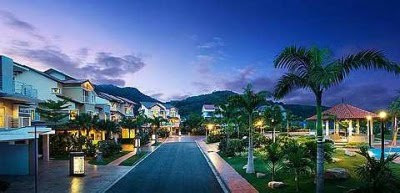PETALING JAYA: Sunway City Bhd (SunCity) is mulling over office and retail projects to be nurtured into yield-accretive assets which can later be injected into the Sunway real estate investment trust (REIT).
The listing of Sunway REIT on July 8 involved the injection of eight assets – Sunway Pyramid Shopping Mall, Sunway Carnival, SunCity Ipoh Hypermarket, Sunway Resort Hotel & Spa, Pyramid Tower Hotel, Sunway Hotel Seberang Jaya, Menara Sunway and Sunway Tower.
The listing exercise raised some RM520mil for SunCity’s project development activities, including land purchase.
 Ngeow ... ‘We want to build up Bandar Sunway into a location of choice for quality offices.’
Ngeow ... ‘We want to build up Bandar Sunway into a location of choice for quality offices.’
SunCity property investment managing director Ngeow Voon Yean said the divestment and unlocking of the value of the assets marked a new chapter for SunCity.
“We are now looking for opportunities in property development or investment to venture into. In the last two years, the ratio of earnings between investment and development property was about 60:40, but post-REIT, it should be around 50:50,” Ngeow told StarBiz.
Besides distribution income from its 37% stake in Sunway REIT, SunCity can also channel the funds raised from its assets divestment to other income-generating activities.
It recently paid RM129mil to acquire an additional 45% stake in its 51%-owned unit, Sunway Lagoon Sdn Bhd.
Ngeow also said the funds would be used to develop more office blocks and retail-related projects. There are 100 acres still undeveloped in the 800-acre Bandar Sunway Integrated Resort, and SunCity also has other smaller parcels of land in Kuala Lumpur.
He said the first project kicked off The Pinnacle in Bandar Sunway, a 25-storey corporate office block with net lettable area of 560,000 sq ft that was scheduled for completion by 2013.
Next up would be the development of a parcel of land beside Sunway Pyramid Shopping Mall. Currently referred to as SP3, this would be a retail and serviced apartments development with vehicular and pedestrian links to the mall.
“The supply of Grade A and international standard office and commercial space in this part of the Klang Valley is still in short supply. We want to build up Bandar Sunway into a location of choice for quality offices to attract blue chip office tenants here,” Ngeow added.
He said the new state-of-the-art office and commercial buildings would qualify as green and sustainable buildings. “The aim is to integrate and link all the office and retail complexes in Bandar Sunway with covered walkways to make them pedestrian-friendly and promote more walking instead of driving within the township. This will lower the carbon footprint of the township and is also in line with the LOHAS philosophy that Sunway has embraced from the start, ” he added.
LOHAS (Lifestyles of Health and Sustainability) is a term that describes the market and lifestyle of consumers interested in issues of health and fitness, personal development, the environment, sustainable living and social justice.
Ngeow said a new commercial project now underway was Sunway Velocity in Cheras, comprising office towers, serviced apartments, shoplots and a shopping mall. The RM1.5bil project on 22 acres will be completed in 2015. It will have a total net lettable area of 850,000 sq ft and gross development value of RM1.5bil.
SunCity also plans to build a 27-storey office building with a net lettable area of 350,000 sq ft, Sunway Tower, in Jalan Ampang, Kuala Lumpur. Plans for the project on a one-acre site are still being firmed up. “We have a couple of other projects on the drawing board and will keep our project pipeline going for synergistic growth between the various divisions of SunCity,” Ngeow said.


